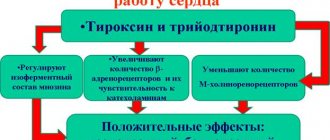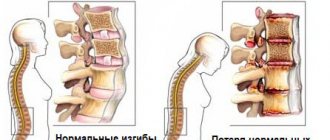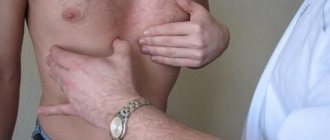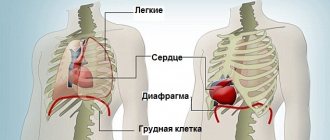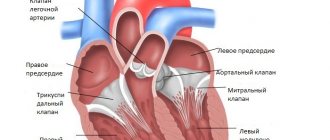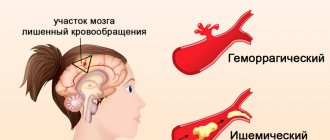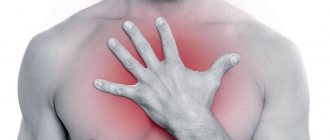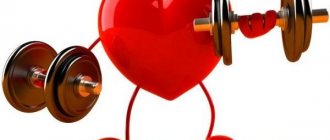What symptoms may accompany pain?
Diagnosis of cardiac problems is complicated by the fact that the patient gives very brief descriptions of unpleasant sensations. If the reason for going to the doctor was neurosis, then the descriptions of the symptoms are extremely colorful. Meanwhile, heart pain is often accompanied by:
- dizziness (occurs for a while or torments a person constantly);
- increased heart rate;
- uneven rhythm of contractions of the heart muscle;
- dyspnea;
- discomfort in the left arm, jaw, back;
- fainting;
- vomiting and nausea;
- fainting;
- pallor, bluish tint to the lips, skin and nail plates.
Many people do not associate these symptoms with sensations in the heart area. However, it is the combination of these signs with pressing pain that can become evidence of cardiac disorders. Do not attribute your condition to the weather or other factors.
If pressing pain in the heart area occurs, even the most terrible thing - a heart attack - cannot be ruled out, since it is often disguised as other diseases. It is best to give yourself first aid if any unpleasant sensations occur and call a doctor.
Cardiac pathologies
Gurgling in the heart area, as a result of heart disease, can be observed in the following situations:
- Development of extrasystole. Accompanied by a single, premature contraction of the heart muscle, and sometimes it can go unnoticed. But in most cases, a person experiences a sharp loss of strength, gurgling in the heart area causes bad thoughts, which creates a feeling of irritability and panic. Frequent attacks of this pathology lead to the development of fainting conditions.
- Tachycardia. It occurs as a consequence of increased work of the sinus node. It may be a normal reaction to fear or excitement. But at the same time it should disappear in a calm state. If this does not happen, and it occurs for no reason at rest, then this can serve as an impetus for the development of myocardial infarction and other serious consequences.
- It is very important to distinguish between extrasystole and tachycardia. So the latter will be characterized by repeated premature contraction of the myocardium.
- Atrial fibrillation. Erratic heart rhythm may indicate the development of serious diseases (heart disease, cardiomyopathy, hypertension). Associated symptoms are sudden changes in pressure, severe weakness and shortness of breath, dizziness and cardiac fainting.
- Bradycardia rarely causes gurgling symptoms in the heart. It is very characterized by a slowing of the heart rate with the manifestation of severe fatigue, a decrease in blood pressure, which can cause fainting.
Angina pectoris
When the blood supply to the heart muscle is disrupted, angina occurs. It is with it that a feeling is created as if something is pressing on the left side, in the chest area. The pain is not constant, but occurs in attacks. They start at the moment:
- intense physical activity;
- under stress;
- increase in body temperature.
Angina pectoris can occur even in a healthy person. It is important to be able to distinguish between an angina attack and a heart attack. With the latter, pain occurs even at rest or during sleep, and disruption of the blood supply to the heart occurs only during various overloads.
Sensations in the left hypochondrium during angina may be as follows:
- pressing;
- squeezing (feeling as if the heart has enlarged several times and there is not enough space);
- similar to heartburn (it seems that the temperature inside has increased by several tens of degrees).
Angina is often accompanied by a sharp change in blood pressure. The first aid for this condition is rest. The patient needs to lie down so that his legs are below the level of his heart. Next, you should take a tablet of the drug “Nitroglycerin”. Be sure to contact a cardiologist for examination. He will determine the exact cause of the pain. A person diagnosed with angina pectoris needs to avoid physical and emotional stress, and also carry Nitroglycerin with him.
Neurocircular dystonia
Heart neurosis is a non-cardiological cause of discomfort in the chest area. Neurocircular dystonia is caused by disturbances in the functioning of the central nervous system. However, it gives signs of severe cardiac disease. A patient with cardiac neurosis may notice a variety of symptoms:
- anxiety for no apparent reason;
- severe dizziness;
- headache;
- pressing sensations in the left chest, forearm, shoulder blade, lower jaw;
- fainting (floaters before the eyes and severe weakness);
- increased sweating;
- sleep disorders;
- difficulty breathing deeply;
- feeling as if there is a lump in the throat;
- It is difficult to swallow saliva due to spasm of the esophagus.
Constant, aching, low intensity - this is how you can characterize the pain concentrated behind the left sternum. It can occur not only under load, but also at rest.
Taking Nitroglycerin will not relieve you of discomfort. In order for the discomfort in the heart area and other symptoms to disappear, you need to take a sedative. Why in this case is it also not worth doing self-diagnosis? Neurocircular dystonia can be similar to angina and heart attack. If you take the wrong medicine, you can only worsen your condition. Your doctor will prescribe a sedative based on your lifestyle and concomitant illnesses.
A person diagnosed with heart neurosis needs to avoid stress. It is worth completely eliminating smoking and alcohol, and not drinking strong tea and coffee. You should also not take medications for a long time; any pharmacological agent should be prescribed by a doctor. Self-medication can provoke new attacks of pain in the left breast area. Also, do not reduce time for sleep and rest.
Girl with heart outside her chest defies fate and awaits surgery
Share on Facebook VKontakte Twitter Odnoklassniki
This little girl looks like any healthy child. She is full of life and loves to dance and run. However, if you look at her tummy, it becomes clear that her health is far from normal. Any strong blow to the solar plexus area could simply kill her.
Eight-year-old Bathsheba Borun has been suffering from a very rare disease called Pentalogy Cantrell since birth. On the planet, this disease affects only 5 million people. This disease manifests itself in the fact that the girl’s heart grows outside her chest and is covered on top only by a thin layer of skin.
The girl says: “This is my heart. I'm the only one who has this. When I dress, I choose only soft clothes so as not to damage my heart. But I can only walk, I can’t jump, run or fly.”
"Even though I'm not supposed to run, I really enjoy it," she adds in an interview with the BBC.
She was born in Russia, but her mother Daria brought the girl to live in the United States in hopes of getting the treatment her daughter needed. Russian doctors told the woman that the girl had virtually no chance of survival.
Daria recalls: “The doctors said that Bathsheba had a very rare congenital disease, due to which she would not survive. When I first saw her heart beating, it immediately became something special to me. Bathsheba is alive, and she can breathe, and she can live. I was very upset because the doctors kept telling me that she was going to die soon. It's not easy for Bathsheba to live with a heart on the outside of her chest. Her life is really, really fragile.”
“She needs to be careful all the time, because she can accidentally fall, and this will become dangerous for her life, because she can die due to an unsuccessful fall on her heart,” the woman adds.
One of the doctors at Boston Children's Hospital agreed to treat her, although many others refused.
Currently, the girl has to take medication to maintain normal blood pressure in the hope that one day doctors will be able to operate on her. For now, the operation is too dangerous for her life.
Let's hope that everything goes well for this energetic and brave little miracle girl and that doctors will soon be able to perform the surgery she needs.
Click " Like " and get the best posts on Facebook!
Share on Facebook VKontakte Twitter Odnoklassniki
Myocarditis
The heart muscle can become inflamed as a result of infection or exposure to toxins. This is how myocarditis occurs. With it, patients complain that in the heart area:
- pricks;
- whines;
- presses;
- cuts.
Unpleasant sensations can be very diverse. In this case, inflammation makes itself felt by other symptoms:
- increased body temperature;
- weakness;
- loss of strength and decreased performance;
- fatigue;
- shortness of breath;
- swelling in the calf area;
- feeling of a sinking heart;
- arrhythmia or tachycardia.
With this disease, Nitroglycerin is also powerless, and attacks can occur several times during the day. Myocarditis may appear as a complication of a cold suffered “on the feet”. It is important to prevent this heart disease from developing into an advanced form. The development of chronic heart failure can only be prevented by observing bed rest and taking all medications prescribed by a cardiologist.
Anatomy of the heart: lining of the heart wall
- Automaticity and cyclical processes allow the heart muscle to contract correctly and uninterruptedly and perform its function.
- A full cycle of work takes less than a second; there are about 70 such cycles per minute, which determines a person’s pulse.
- The alternating contraction and relaxation of the atria and ventricles causes the blood to constantly circulate.
- A failure or delay at any stage can lead to disruptions in the functioning of the entire body and serious illnesses.
- Doctors are excellent at diagnosing the slightest dysfunction of the cardiac cycle and correcting it.
Any chest pain in the heart area requires consultation with a doctor.
Causes
Pain in the heart can occur due to various pathologies in the body; they are not always related to problems of the cardiovascular system.
Why pain occurs:
- poor blood supply and insufficient oxygen supply to the heart muscle;
- inflammatory processes in the tissues of the heart;
- disruptions in metabolic processes in cardiac tissues;
- high blood pressure, heart disease - these pathologies cause increased stress on the heart;
- stomach diseases, diseases of the esophagus - gastritis, ulcers;
- pathological changes in the thoracic spine, ribs, intercostal nerve endings;
- lung diseases.
With pain of cardiac origin, additional signs often appear - tachycardia, arrhythmia, shortness of breath, the skin becomes pale or acquires a bluish tint. Against the background of poor blood supply, there is a feeling of lack of air, weakness, and fainting.
Important! Often, heart pain occurs against the background of colds - this is how the body reacts to toxins and the presence of pathogenic microorganisms.
Pressing heart pain - what could it be?
Pressing heart pain occurs in different places of the chest, and irradiation to other parts of the body is often observed.
Causes of pressing pain in the heart:
- The pain syndrome will increase after physical exertion, radiates to the left arm, back, is accompanied by burning and compression, increased blood pressure - this is angina pectoris, one of the types of coronary artery disease. It will become easier for a person if he relaxes and dissolves nitroglycerin.
- Pressing pain in the heart area at rest, which is long-lasting, is accompanied by tingling, aching sensations - nervous overexcitation, stress, high emotional stress.
- Pressing pain in the chest in the region of the heart, which is accompanied by shortness of breath - a sign of myocarditis. With this infectious or toxic damage to the heart muscle, swelling of the lower extremities often occurs, the heart rate increases, and the temperature rises. The attack of pain occurs several times a day, nitroglycerin does not eliminate the unpleasant symptoms.
- Pressing pain in the heart area in adolescents is rarely related to heart disease - the discomfort intensifies with deep breaths and waving the arms, which indicates problems with the musculoskeletal system. Sometimes heart pain in teenagers occurs due to the use of narcotic substances or illegal sports nutrition drugs.
- The left arm goes numb due to pain in the heart - one of the most dangerous symptoms and may indicate a heart attack. Similar symptoms can develop with atherosclerosis and intercostal neuralgia.
Important! If pain in your left arm is accompanied by blurred vision, or problems arise with your left leg, you should urgently consult a doctor; such symptoms often indicate a stroke.
Pressing pain under the heart, which radiates to the forearm, lower jaw, and scapula - signs of cardioneurosis. The disease refers to pathologies of the nervous system and does not cause changes in the condition of heart tissue. Relief is observed after taking sedative medications. With cardioneurosis, a person becomes restless, the quality of sleep deteriorates, and sweating increases. The disease is accompanied by increased fatigue, swallowing and deep breathing cause difficulty.
What to do if there is pressure in the heart area
Pain in the chest area is relieved, taking into account the underlying pathology that led to this problem. Pain syndrome is eliminated with the help of various medications or surgery. The choice of treatment method depends on the cause. If discomfort occurs due to cardiovascular disease, the doctor may prescribe the following groups of drugs.
| Group of drugs | a brief description of | Name |
| Antiplatelet agents | Designed to prevent platelets and other formed blood cells from sticking together. Prescribed during periods of exacerbation and rehabilitation of cardiovascular pathologies | Heparin, Aspirin, Ticlopidine, Eptifibatide, Curantil, Pentoxifylline |
| Beta blockers | They have a pronounced ability to inhibit the effect of adrenaline on special receptors, which, when excited, cause vasoconstriction, increased blood pressure, and tachycardia | Vixen, Timolol, Anaprilin, Bisoprolol, Celiprolol |
| Cardiac glycosides | The group’s drugs normalize myocardial function, restore metabolism and cellular respiration. The disadvantage of medications is their high toxicity, so they are taken strictly as prescribed | Digoxin, Celanide, Korglykon, Strophanthin |
In unstable conditions, taking sedatives is indicated. To strengthen the heart muscle, a multivitamin complex, potassium and magnesium supplements are used.
Attention! During attacks of angina, pain can be reduced with the help of Nitroglycerin. You need to take the pills before the ambulance arrives.
Patients are advised to reconsider their lifestyle, give up bad habits, eat right, walk more in the fresh air, avoid stress, follow a daily routine and be sure to get enough sleep.
Pressing and squeezing pain in the heart should not cause panic or uncontrolled use of medications. If this unpleasant symptom appears, you need to consult a doctor to determine the exact cause of its development. A set of tests and diagnostics is needed that will help you see an accurate picture of what is happening. Treatment tactics are determined based on the results of diagnostic examinations. A specialist should tell you what to do when the heart is compressed on the left.
Diagnostic methods
The main type of diagnosis of heart pain is an electrocardiogram. Be sure to do a stress ECG - record the activity of the heart during rest and during physical activity. Based on the examination, you can see in which places the heart arteries are narrowed, determine the degree of wear and tear of the heart and blood vessels, and the risk of coronary artery disease.
Additional methods:
- chest x-ray;
- fibrogastroscopy – allows to exclude pathological changes in the stomach and esophagus;
- examination of the spine by a neurologist, MRI to detect intervertebral hernia;
- blood test - during a heart attack, damage to heart cells occurs, special enzymes appear in the blood;
- Ultrasound of the heart - aimed at studying the condition of the muscles and valves of the organ;
- tomography - allows you to identify coronary pathologies.
Important! Pressing pain in the heart is not typical for myocardial infarction. But it often indicates the onset of anaphylactic shock.
www.lechim-prosto.ru
Causes of arrhythmia
- Gurgling in the heart area may be part of the clinical picture of arrhythmia, which develops for the following reasons:
- pathological processes leading to changes in the heart and blood vessels;
- diseases associated with disruption of the nervous system;
- as a response to dysfunction of the endocrine glands;
- long-term use of certain types of medications;
- physical and psychological overload;
- pathologies of the stomach and intestines;
- excessive consumption of alcoholic beverages and smoking habit.
Why is my heart pressing?
Pressing pain in the heart is quite rare during a heart attack, but this option cannot be ruled out in any case, since a heart attack quite often disguises itself as any other disease. It is also contraindicated to engage in self-diagnosis when such a symptom appears.
Angina pectoris
characterized by the appearance of pressing pain in the heart.
The heart is designed in such a way that it must provide blood to the entire body, and physical activity and an increase in body temperature force it to work more intensely in order to provide the entire body with the necessary nutrients and oxygen. With angina pectoris, the pressing pain in the heart is paroxysmal in nature and is relieved by taking cardiac medications. Angina pectoris is diagnosed in almost every person. Pressing pain in the heart appears during physical activity, possibly when walking, while running, that is, during any physical activity, or emotional shock. The distinguishing feature between angina and a heart attack is that an attack of angina cannot occur during sleep, at rest. But only a doctor can make a diagnosis. It is important to correctly describe your condition. With angina, the pain is pressing, squeezing in nature, sometimes this condition resembles heartburn, as there is a feeling that something is burning inside. The attack of pressing pain during angina pectoris is accompanied by a change in blood pressure.
A cardiologist should look for an answer to the question of why the heart is pressing. But if the pain strikes a person suddenly (and this usually happens with angina), then you need to calm down, take a comfortable body position, and take a nitroglycerin tablet. If a person is diagnosed with angina, then he should try to avoid physical activity, emotional stress, and always have nitroglycerin tablets with him. Pressing pain in the upper region of the heart appears with neurocirculatory dystonia
(neurosis of the heart). A number of unpleasant sensations (pressing pain, dizziness, palpitations) appear after strong emotional experiences, as a consequence of excitement. This condition is observed in young people who often suffer from infectious diseases of the upper respiratory tract. In case of an attack of pressing pain, you need to take sedatives (valerian, Corvalol, Valocardine). If attacks occur frequently, you can periodically take sedatives or sleeping pills before going to bed. The patient will need to get rid of bad habits, try not to be exposed to stress and avoid emotional stress.
Why is my heart pressing? Another possible cause is myocarditis
(disease caused by infection). Symptoms: severe pressing pain in the chest, shortness of breath, rapid pulse, possible swelling in the legs. Myocarditis usually appears as a complication after a cold. Chronic heart failure may develop if the patient is not placed on strict bed rest and adequate treatment is not started.
medportal.su
Why does my heart squeeze and press?
There are various causes of pressing and other pain in the heart. Painful sensations can be associated with diseases of the heart and blood vessels, pathologies of the respiratory system and even neuropsychiatric problems.
Non-cardiac causes
When there is pressure in the area of the heart, it can be a symptom of diseases of the lungs, digestive tract, and nervous diseases. Unpleasant sensations may occur against the background of the following pathologies and conditions:
- tuberculosis;
- pneumonia;
- lung tumor;
- pleurisy;
- pneumoconiosis;
- intercostal neuralgia;
- osteochondrosis;
- intervertebral hernia;
- thoracic radiculitis;
- shingles;
- heartburn;
- feeling of lack of air (shortness of breath);
- flatulence;
- pancreatitis;
- hormonal disbalance.
Attention! Psycho-emotional overstrain can often put pressure on the heart until it hurts: stress, depression, post-traumatic syndrome, hypochondria, vegetative-vascular dystonia, various phobias, chronic fatigue syndrome.
Aching in the heart area during hangover syndrome. Alcohol negatively affects all structures of the heart; the myocardium is especially sensitive to this effect. If it doesn't work enough, chest pain occurs. An overdose of ethyl alcohol can result in acute inflammation of the digestive tract, which also causes pain.
Heart reasons
Most often, pain in the heart area is observed in people suffering from heart disease. First of all, it is cardiac pathology that a person thinks about when he has discomfort in the chest. Why does the heart press and squeeze:
- Angina pectoris is a pathology that develops against the background of oxygen starvation that the myocardium experiences. This is a kind of signal that serious problems are brewing in the blood circulation. The disease manifests itself as intense pain that cannot be ignored. The pain syndrome can be different (pressing, stabbing, squeezing, pulling). Very often the pain is sharp and the person groans. As a rule, the attack lasts 5 minutes. If the pain lasts more than 20 minutes, this indicates the development of acute myocardial infarction.
- Myocardial infarction is the death of a section of the heart muscle caused by an acute circulatory disorder in this section. The intensity and nature of pain depend on several factors: the size and location of the necrotic lesion, as well as the stage and form of the infarction. An extensive lesion is characterized by a burning, pressing pain on the left side (like a dagger), which is not relieved by Nitroglycerin. A heart attack requires immediate hospitalization of the patient.
- Cardioneurosis, or heart neurosis, is a common disease accompanied by heart pain, which is combined with vegetative symptoms. Patients complain of cardiac pain, rapid heartbeat, irritability, and sleep disturbances. The pain has no clear localization and can move to the scapular area, neck, arm, shoulder, epigastrium, lower back, and perineal organs.
- Heart defects are deviations from the norm that interfere with the movement of blood or change its filling with oxygen and carbon dioxide. At the stage of decompensation, chest pain is constantly disturbing and does not go away even at rest. In addition to pain, a person complains of dizziness, headache, tachycardia, and general weakness.
- Myocarditis is inflammation of the myocardium caused by infectious, toxic or allergic influences and accompanied by disruption of the organ. The pain is aching and paroxysmal. Weakness, shortness of breath, cardiac arrhythmia, decreased blood pressure are the main signs of myocarditis.
- Pericarditis is inflammation of the outer lining of the heart (pericardium), often of an infectious, rheumatic or post-infarction nature. Pressing pain is mainly observed on the right side of the chest. Sitting or bending slightly forward relieves the condition.
- Myocardial dystrophy is a lesion of the heart muscle of a non-inflammatory nature, which manifests itself in the form of disturbances in its metabolism under the influence of extracardiac factors. At first there are barely noticeable, dull, pressing pains in the heart. Over time, they intensify and become quite noticeable.
Attention! When pain in the heart area occurs suddenly and lasts more than 30 minutes, you need to call an ambulance. In most cases, hospital treatment is required.
Pulmonary embolism, coronary heart disease, mitral valve prolapse, false angina are diseases that can also cause pressing pain.
Symptom Description
- Patients characterize pressing pain in the heart area as a feeling of squeezing in the left side of the chest. This symptom occurs suddenly during physical or emotional stress, or for no apparent reason.
- The pressure is short-term, no more than half an hour.
- The intensity can vary - from weak to so pronounced that the patient is forced not to move and hold his breath.
- The fist symptom is characteristic - the patient can approximately describe the area in which he experiences pressing pain by pressing his fist to his chest.
- The pain is relieved by stopping the exercise, taking sedatives or nitrates.
Treatment and prevention
For heart disease, the doctor prescribes specific treatment, and, if necessary, surgery (for example, in case of rupture of an aneurysm or narrowing of the arteries due to atherosclerosis). If pain in the heart area is caused by non-cardiac causes, you need to undergo a course of treatment for the underlying disease. People with neurosis are prescribed spa treatment and physiotherapy and are told how to continue therapy at home.
The peculiarity of chest pain is that its intensity does not always indicate the severity of the disease. For example, sharp, unbearable, stabbing pain in the heart often indicates neurosis, and not severe cardiac pathology, while dull, pressing pain indicates a heart attack and requires immediate help. Therefore, you should not diagnose yourself and try to cope with unpleasant sensations on your own at home.
Even if you don’t know how your heart hurts and presses, after 35–40 years you should regularly measure your blood pressure and visit a therapist every six months. After all, many diseases make themselves felt long before serious symptoms appear, and the sooner they are identified, the greater the chance of recovery.
Causes of pressing pain in the heart
There are several diseases that manifest themselves as a feeling of pressure on the heart.
It can be:
- Angina;
- Myocardial infarction;
- Cardioneurosis;
- Myocarditis.
- Pressing pain in the heart during heart disease is often accompanied by shortness of breath, a feeling of lack of air, fear of death, anxiety and other unpleasant sensations.
- The patient may feel much worse than his actual condition, or, conversely, feel relatively well with severe myocardial damage.
- With angina pectoris and myocardial infarction, the pain is pressing, squeezing or stabbing in nature, accompanied by shortness of breath, fear of death, and other symptoms. The duration of pain (longer than half an hour) is considered the first differential diagnostic sign of a heart attack, allowing it to be distinguished from an attack of angina. The intensity of the pain has nothing to do with the severity of the condition.
- Cardioneurosis has a different nature, but the symptoms are similar to angina pectoris - pressing pain, shortness of breath, fear. It can be difficult to distinguish cardioneurosis from angina pectoris and even a heart attack. Moreover, it is possible to have both of these diseases at the same time. The accompanying symptoms may not give a clear picture, and the nature of the pain does not depend on which of the two diseases it is caused by. An attack of cardioneurosis can be easily controlled with sedatives.
- Myocarditis is inflammation of the myocardium and is either infectious or toxic in nature. A distinctive feature of pain in this disease is that it is present almost constantly. The intensity of the pain may vary throughout the day. Associated symptoms may be absent in chronic myocarditis. Acute myocarditis is manifested by increased body temperature, severe weakness during any physical activity, and constant pain in the heart of various types.
Consequences
If no measures are taken, the disease that caused heart pain will progress, which will eventually lead to life-threatening consequences.
- A heart attack is an acute disruption of the blood supply to the heart, which leads to the death of some myocardial cells, and a scar forms in their place. The consequences depend on the size and location of the scar. Scar tissue, unlike muscle tissue, is unable to contract, so after a heart attack, heart function deteriorates significantly. How this affects the patient’s condition depends on whether the remaining muscle tissue can compensate for the function of the damaged one. The recovery period after a heart attack is long and associated with a significant limitation of physical activity.
- Myocarditis is an inflammatory disease that can be acute or chronic. The course of acute myocarditis, as a rule, is rapid, leading to significant hemodynamic disturbances, heart rhythm disturbances, and subsequently to the formation of an extensive scar. Chronic myocarditis occurs over a long period of time, with periodic exacerbations and remissions, leading to the gradual replacement of part of the heart muscle tissue with scar tissue (cardiosclerosis). This disease can be even more dangerous than myocardial infarction, although it is less common.
Conduction system of the heart
When studying the structure of the heart, anatomy does not ignore the structures that provide one of the main functions of this organ. It contains a so-called conductive system that promotes contraction of its muscle layer, i.e. essentially creating the heartbeat. The main components of this system are the sinus-atrial and atrioventricular nodes, the atrioventricular bundle with its legs, as well as the branches extending from these legs.
The sinoatrial node is called the pacemaker because it is where the impulse is generated that gives the command to contract the heart muscle. It is located near the place where the superior vena cava passes into the right atrium. The location of the atrioventricular node is in the lower part of the interatrial septum.
- rhythmic generation of impulses;
- coordination of atrial and ventricular contractions;
- synchronous involvement of all cells of the muscular layer of the ventricles in the contractile process (which leads to an increase in the efficiency of contractions).
First aid for pressing pain in the heart
Pressing pain in the heart is an alarming symptom, so if it occurs, it is imperative to take therapeutic measures:
- First of all, you need to stop physical activity.
- The patient needs to sit or lie down in a comfortable position, unfasten the collar, belt and other items of clothing that interfere with free breathing.
- It is undesirable for him to move ; he needs to talk as little as possible.
- someone close to you provides assistance
- As a medication, you can take nitroglycerin - no more than one tablet at a time.
- Sedatives such as validol, corvalol and others can and should be taken, they alleviate the patient’s condition.
- resume activity only after the pain stops.
- If the pain in the heart lasts more than half an hour, or the patient’s condition is serious, then this is a sign of myocardial infarction. In this case, it is necessary to call an ambulance as soon as possible. Restrictions on motor activity remain; the patient should remain as still as possible.
- take nitroglycerin in the amount of 3 tablets at intervals of about 20 minutes; sedatives will not be effective.
- If the patient is in serious condition with a suspected heart attack, he needs to be placed in a semi-sitting position, and pressure bandages can be applied to the thighs to reduce blood flow to the heart. If hoarse breathing or foaming at the mouth occurs, the patient should be given alcohol vapor to inhale.
What to do if your heart is pressing?
A short list of what needs to be done if the heart is pressing and it’s hard to breathe:
- Sit or lie down in a comfortable position;
- Provide air access to the respiratory tract. If possible, open the window;
- Take nitroglycerin;
- If the condition worsens or the pain lasts more than half an hour:
- Call an ambulance;
- Take 3 tablets of nitroglycerin at intervals of 20 minutes;
- If necessary, apply pressure bandages to the legs and inhale alcohol vapor.
These measures are not enough for full treatment, but they can improve the patient’s condition.
Dangerous accompanying symptoms
- Heart pain rarely occurs on its own; it is usually accompanied by other symptoms. As a rule, they arise due to hemodynamic disturbances.
- Fear of death is a very characteristic symptom that almost always accompanies heart pain. Associated with the exceptional importance of heart function for the body, and the resulting emotional reaction to pain in the heart.
- Shortness of breath and a feeling of lack of air appear due to impaired blood circulation in the pulmonary circulation. As a rule, stagnation develops in it, which can lead to pulmonary edema. This is a dangerous condition that disrupts gas exchange and is manifested by a bluish tint to the skin, shortness of breath, cough with sputum, and in severe cases, foam from the lungs.
- Other symptoms associated with pressure on the head and heart - general weakness, feeling tired, headache, tinnitus and spots before the eyes - are associated with hemodynamic disturbances.
Fist, Victory and heart are simple and clear signs. What is behind them?
Lately, many of us have been looking for close and understandable symbols, discovering new meaning in familiar things, talking a lot about flowers and women, about the colors of flags, their meaning and role in the lives of citizens. The symbol of protests in Belarus has become the use of combined symbols: fist, “victory” and heart - simple and understandable signs for everyone. What's behind this? Which symbols are fresh and new, and which have an ambiguous history?
Today, protesters repeatedly replicate gestures, symbols and signs, filling them with personal meaning and energy. Thoughtful people are probably disgusted by the superficial use of any signs, and probably someone has a desire to get to the bottom of it.
One of the most popular performers today sang: “My palm has turned into a fist, and if there is gunpowder, then give fire, like this...” Incredible Belarusians are trying to focus attention on peaceful protests, and for some, the use of a symbol in the form of a compressed the fist of the hand does not suggest peaceful intentions. Why?
Today's fist may send someone back to the times of the "Rot Front" (German: Rotfront from Rote Front - "red front"), when an international greeting gesture was in use: a half-bent (or almost straightened) hand raised (usually the right) with fist turned away from you.
Gesture on the poster of the Madrid Defense Council “Unified command is the key to victory”, 1937. Source: RGVA
This gesture has been used in Germany since the late 19th century as a work greeting. After World War I, it symbolized affiliation with or solidarity with the German Rot Front created in the early 1920s. Its members greeted each other, sharply throwing up their right hand, clenched into a fist. The organization's icon was an image of a fist.
This greeting became widely known throughout the world as a symbol of the fight against fascism in the 1930s. It was used especially often during the Spanish Civil War. The gesture symbolized the unity of the proletariat of all countries and the readiness to fight to the end for the victory of the International.
In modern protest movements, the raised fist has been widely used in the United States as a symbol of the Black Power movement, created by radical activists who fought for black rights in the 1960s. Many Americans would be surprised to learn that this gesture is considered by others to be a symbol of communism.
Photo: consortiumnews.com
The “guys of '68”—the so-called left-radical participants in the protests in France in May 1968 (known as “Red May”)—also actively raised their hand clenched into a fist. These events began in Parisian universities: at the University of Paris X - Nanterre and the Sorbonne. In addition to the fist symbol, from those protests the most famous slogan of the students of that time, “It is prohibited,” as well as a number of other no less juicy and creative message posters, went down in history. The French were as creative as they could with slogans and watchwords (this reminds me of something). Some of them went down in history, others remained an expression of narcissism and situational hype. The May events in France in 1968 were marked by a surge of graffiti in the spirit of youthful rebellion and anarchy, seasoned with the wit of the strikers.
May 1968. Photo: Bruno Barbey/Magnum Photos
Here are some examples: “Be realistic, demand the impossible!”; “Those who make a revolution half-heartedly dig their own grave!”; “The boss needs you, but you don’t need him!”; “Live without wasting time (on work), rejoice without obstacles!”; “The revolution is incredible because it is real!”; “Get up, cursed university!”; “One weekend without a revolution is much bloodier than a month of permanent revolution!”
Many French residents mocked leftist and anarchist slogans. Nevertheless, many Sorbonne teachers sympathized with the students - for example, Michel Foucault, Jean-Paul Sartre and other representatives of the radical intelligentsia.
The result of mass protests (almost 10 million people took part in the general strike) were early parliamentary elections on June 23 and 30, which put an end to the conflict.
Boris Yeltsin actively used his fist to demonstrate solidarity and unity, but Bill Clinton more often showed his open palm to both his fellow citizens and the world.
Mr. Trump is currently seen frequently displaying a raised fist, which takes on different meanings depending on events.
The current President of the Republic of Belarus has not been seen with a raised fist recently.
As you can see, there are very different interpretations and cases of use, and for some a raised fist is a symbol of solidarity and unity, for others it is strength and disobedience, and others see in this gesture a symbol of “color revolutions” - so ambiguous attribute of the August events.
"Victory" is a common gesture meaning victory or peace. It is shown with the index and middle fingers of the hand pointing upward in the shape of the Latin letter V. Interestingly, the symbol even has a sound in Morse code (- ••• -, and it is similar to the beginning of Beethoven's Fifth Symphony). This is due to the fact that the V gesture became most famous during the Second World War and was a symbol of victory over the invaders. Winston Churchill can rightfully be considered the popularizer of “victory,” who often won, or perhaps, with this gesture, lured victory.
Photo: Imperial War Museums
Photo: Alfred Eisenstaedt—The LIFE Picture Collection/Getty Images
For example, in Australia such a gesture may be regarded as offensive, and in many countries this is how the number two is designated.
There is a legend about the origin of the gesture, which goes back to the events of the Hundred Years' War (1337-1453), when English archers showed two fingers to mock French enemies. The French, when they managed to catch an English archer, cut off his index and middle fingers of his right hand so that he could not return to the profession. And the Englishman, showing his intact fingers to the French, seemed to be saying: “Be afraid, enemies, I’m still intact!”
Foreign politicians use this gesture a lot and often. Our politicians and those who want to be them were much more restrained before the summer of 2020.
The heart made from folded fingers is also a widespread and understandable gesture and symbol. Among Belarusians, it was introduced into mass circulation by Daria Domracheva after the victorious race at the World Cup stage in a stellar year for her in 2020, on the eve of her victories and being awarded the title “Hero of Belarus”. Domracheva’s heart and victories united her compatriots and riveted even non-biathlon fans to the screens. Then the journalists had the most pressing question: who is the heart addressed to? Now this gesture is also widely used by Belarusian women, who also talk a lot about unification, but in other ways that are more understandable to them.
Daria Domracheva. Photo: sports.ru
The heart shape is a symbol that today is invariably associated with love for everything and everyone, as well as with romantic relationships and Valentine's Day. But in ancient Greece, the hearts were symbols of silphium, a type of giant fennel that the Greeks used to flavor food and as a medicine. It later became the most popular form of birth control. Needless to say, love adds flavor to life, so there are no particular contradictions with history.
A heart in the hands of politicians is an attempt at reputational adjustments. In the minds of the majority, politicians are pragmatic, insensitive people, and the heart-shaped gesture makes their image emotional, sensual and understandable to the majority.
Because of its simplicity and clarity, the combination of the symbols described above seems absolutely natural, arising naturally from the mood and emotional impulse. Everything ingenious is simple - this is not a common concept. The secret of many of the most successful symbols, logos and brand names is precisely in naturalness, when the recipient does not understand that behind the apparent simplicity are hidden days and months of painstaking work and testing for viability. Naturalness, organicity, clarity and closeness to the heart are the very things that many new products lack today.
When to see a doctor?
- It is advisable to consult a doctor in any case if you experience heart pain, especially if it is accompanied by the symptoms described above.
- The second situation when seeking medical help is mandatory is if the therapy prescribed by the doctor has ceased to be effective.
- And the third situation when you need to immediately consult a doctor is a suspicion of a heart attack or other serious complication.
- In other cases, it is advisable to periodically be examined by a cardiologist so that the doctor has the opportunity to monitor the course of the disease, evaluate the effectiveness of treatment, and prevent the development of severe complications in a timely manner.
A seven-year-old girl from Novorossiysk has a heart in front of her chest
Virsavia Borun-Goncharova was born with an incredibly rare condition: her heart is located on the outside of her chest and is protected by just a thin layer of skin. The girl and her mother moved from Russia to the United States in the hope that the operation would help Bathsheba.
This diagnosis of ectopia of the heart occurs in only five people out of a million. When doctors discovered the girl’s pathology, they advised her mother to prepare for the worst.
Doctors told me that Bathsheba has a very rare disease. They said she wouldn't survive. When I saw her heart beating for the first time, I realized that it meant a lot to me. I realized that Bathsheba was alive, she was breathing and there was a chance to survive,” recalls Bathsheba’s mother Dari.
View this post on Instagram
Do you want to have your #personalJesus? ✝ you can buy one of this"Virsaviya Jesus Riri" #unique #handmade #jesus #dolls from #VirsaviyaWarrior and me- @dariborun — @fit_thick_riri ? you can dm me or leave a comment with questions. I will ship this doll with my and Virsaviya's signature and date we made it and your name on it. They all are very exclusive because painted by my hands and it's takes for me 4-5 hours to create one, plus time and money to find and get all the materials that I need for dolls. I can ship it first class package internationally or all over the USA but it's going to be extra payment for you. Please support me and my wonderful daughter by reposting it and ordering dolls and after you ordered the doll please don't forget to post a picture with it and tag my name on it ✊?#jesuswarriors #worship #ifeelblessed #prayerworks #whenyoubelieve #ibelieve #PrayForBathsheba #BathshebaStrong #TeamBathsheba #talented #tv #powertv #socialmedia #teamJesus #lord #God @oprah @theellenshow #oprah #theellenshow
A post shared by ✨?Dari Borun & Virsaviya?✨ (@dariborun) on Jan 17, 2020 at 5:35am PST
The girl continues to fight and enjoys life.
Read on Medialeaks Personal experience. What to teach a child to raise a happy adult
When I dress, I choose soft clothes to protect my heart. I walk, jump, fly, run, although I’m not allowed to run, but I love it very much,” she says.
The other day, the BBC TV channel talked about Bathsheba’s illness. The footage shows how close the girl’s heart is to her skin.
Bathsheba and her family moved from Novorossiysk to Hollywood for medical help several years ago. Now she is being given a drug that lowers blood pressure - while the girl is too weak for American surgeons to intervene. If it works, it will be possible to operate on the child.
I like to draw Jesus, ponies and angels. I don’t go to school, and I don’t do ballet either, but I want to try it at home,” says Virsheba.
The girl's mother actively maintains Instagram about her daughter, who, judging by the photographs, loves dolphins, dogs, horses and Beyoncé.
View this post on Instagram
I thank Jesus for everything we have ✝?? look at this wonderful person? she believes that she will be able to become an actress despite the way she looks different from others ✊? do you believe she can? If yes, please tag @theellenshow @oprah and other people who would help to make her dream come true?? #Oprah #theellenshow #prayerworks #whenyoubelieve #ibelieve #teamjesus #VirsaviyaWarrior #TeamBathsheba #PrayForBathsheba #BathshebaStrong #jesuswarriors #ifeelblessed #disney #disneykid #disneykids #models #model #miamimodel #miamimodels #kidmodel #kidsmodel #kidsfashion #book #actress
A post shared by ✨?Dari Borun & Virsaviya?✨ (@dariborun) on Jan 7, 2020 at 9:01am PST
The girl needs to be very careful. Any unfortunate fall or impact can cause damage and cardiac arrest.
Recently Medialeaks talked about another rare disease in American Joanna Watkins. The girl is allergic to almost everything: the smell of pizza, her parents, and even her own husband. Because of this, Joanna has been living in an isolated room in the attic for more than a year, hardly leaves the house and eats the same thing every day.
Diagnosis of heart diseases
Treatment of heart diseases is impossible without correct diagnosis.
Modern cardiology has a fairly large arsenal of tools for diagnosing heart diseases:
- First of all a patient survey is used to determine the nature of the pain - whether the heart is pressing at night or during the day, whether the pain is associated with physical activity, and other information will help the doctor make a preliminary diagnosis. Laboratory methods in such cases are not very informative, and instrumental methods come to the fore:
- The very first and simplest method is ECG . It allows you to determine ischemic or inflammatory changes in the myocardium.
- But with angina , an ECG recorded outside an attack may not be informative and have minimal changes. In these cases, a Holter ECG is used, i.e., a daily recording of a cardiogram. It allows you to determine the nature and frequency of attacks.
- The second important method is echocardiography (ultrasound of the heart, echo-CG). It allows you to determine the structural pathology of the heart muscle, heart defects, and identify disturbances in intracardiac blood flow.
- Coronary angiography is a method that allows you to assess the condition of the coronary arteries, their patency, the degree of disturbance of blood flow in them, and identify ischemic areas.
- Cardiovisor is one of the modern technologies that allows the patient to independently monitor changes in his condition. Requires the patient to be attentive to their health, as well as basic knowledge about cardiology.
- MRI and CT allow, in controversial cases, to assess changes in the condition of the heart, to see a three-dimensional picture for the most accurate description of the processes occurring in the heart and the most complete picture of the disease and the effectiveness of treatment.
Only based on the data of these tests, the doctor will be able to make an accurate diagnosis and reasonably say what to take if the heart is pressing. Self-medication in this case is very dangerous - after all, you don’t joke with your heart.
cardiohelp.com
What determines the rhythm of your heart?
What makes the heart beat? How does this vital organ work? Regular heartbeat is achieved as a result of the inherent rhythmicity of the heart muscle. There are no nerves inside the heart itself, and this organ does not need any external regulatory mechanisms to stimulate the muscle to a rhythmic contract.
The sound of your heartbeat is the opening and closing of your valves. Blood first enters the atria and then flows passively into the ventricles. When the ventricles are nearly full, the atria contract in unison and force as much blood as possible into the ventricles. Heart muscle cells, otherwise known as cardiac muscle fibers, have a unique ability that makes them unlike any other muscle cell in your body.
How to make your heart beat faster? There are many different reasons and methods, among which it is worth noting physical activity and strong emotional states.

